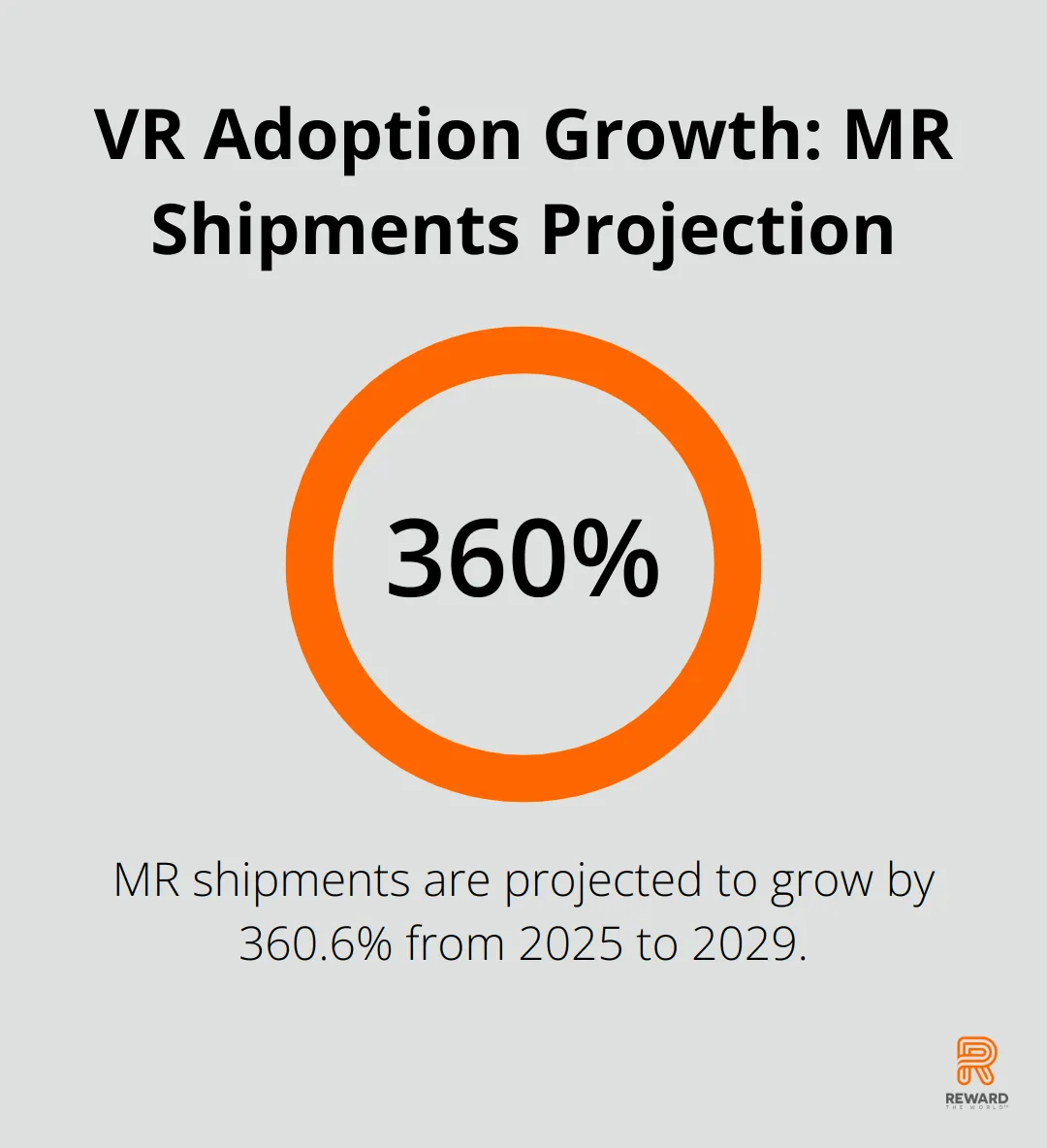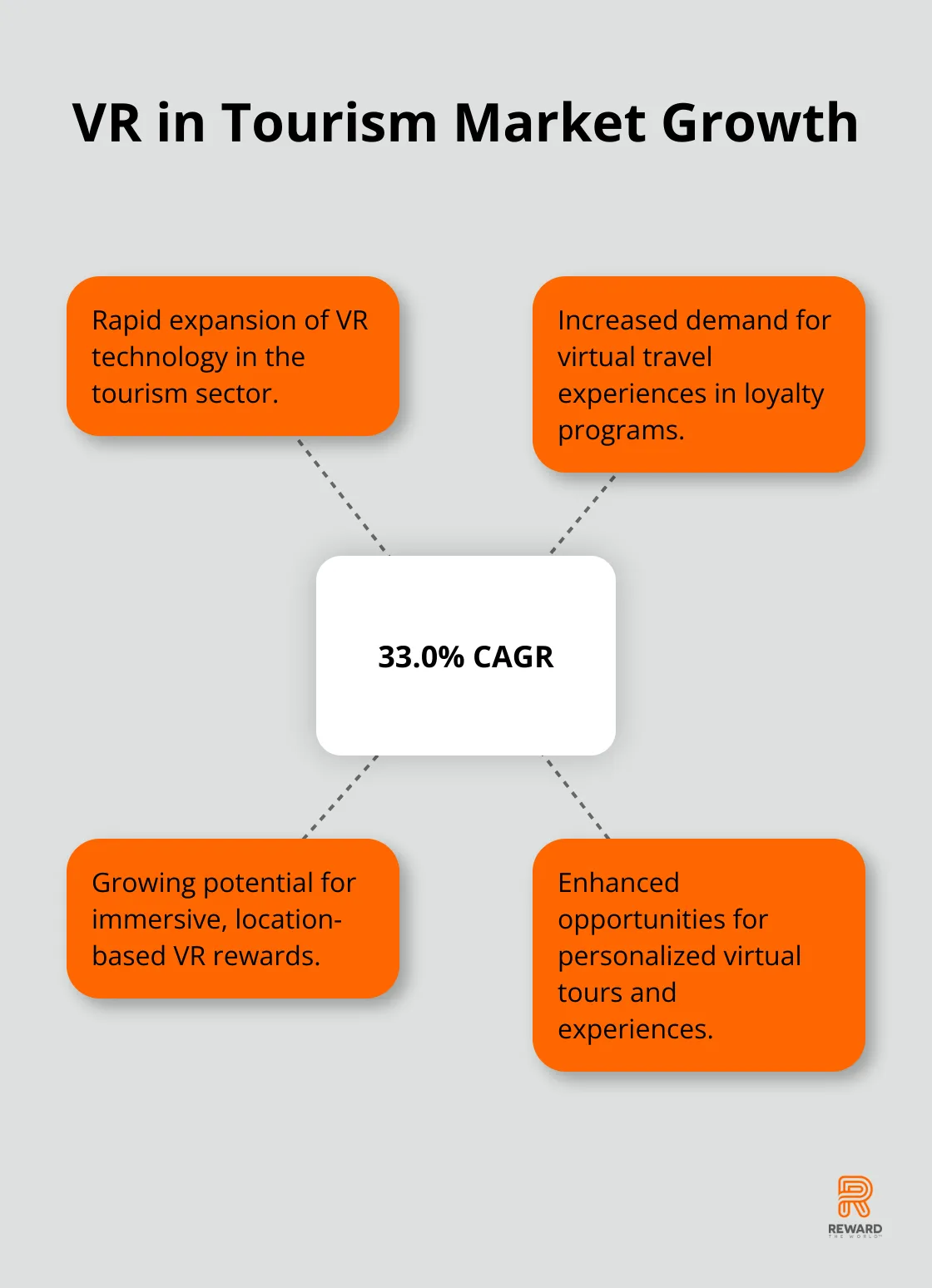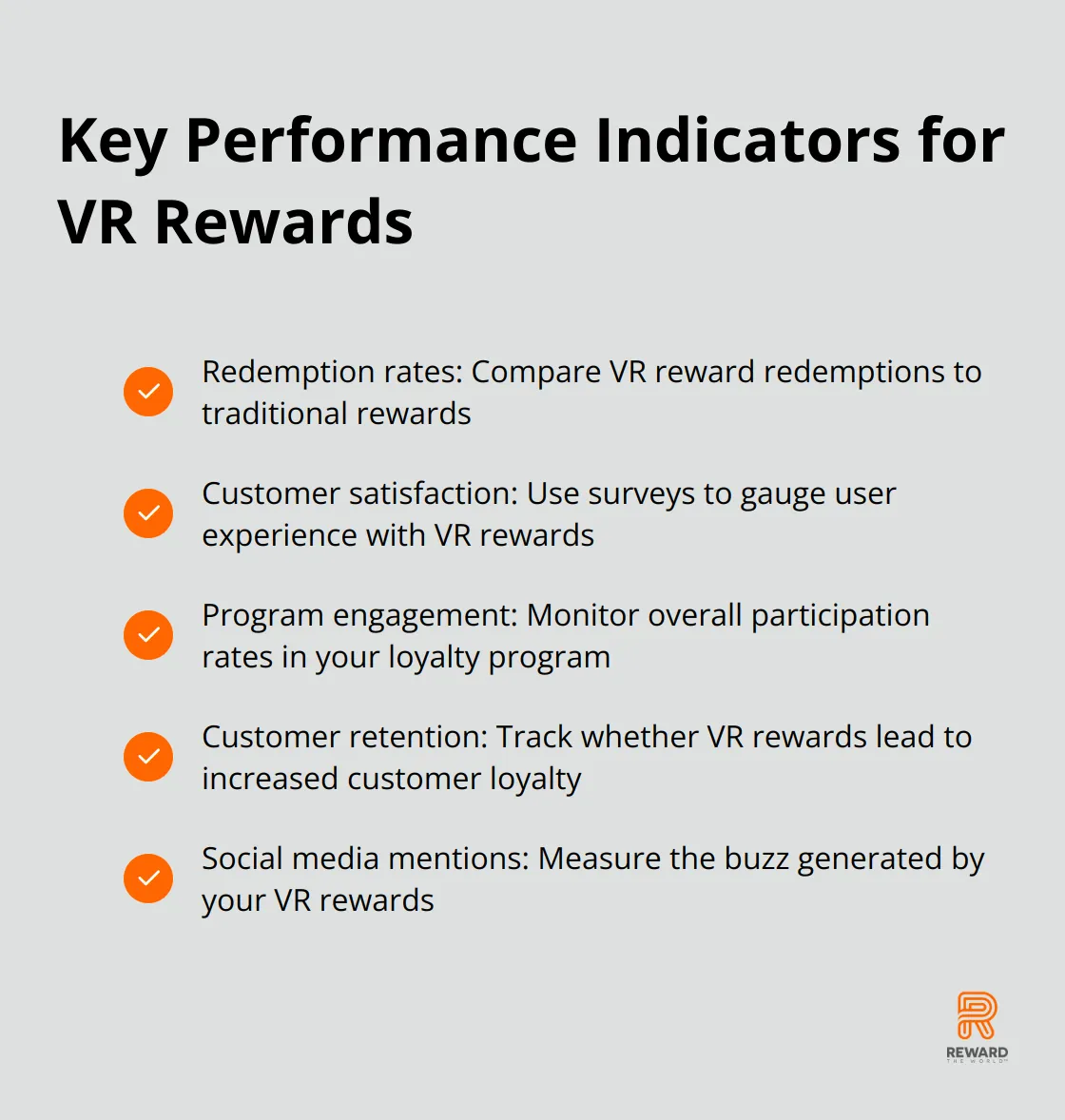
Virtual reality is revolutionizing the way we experience rewards. At Reward the World, we’re excited about the potential of VR experiences to transform loyalty programs.
This cutting-edge technology offers immersive, unforgettable moments that traditional rewards simply can’t match. From virtual travel to interactive skill-building sessions, VR is opening up a world of possibilities for brands to engage and delight their customers.
How VR Reshapes Reward Programs
VR’s Meteoric Rise in Popularity
Virtual Reality (VR) transforms the landscape of reward programs, offering unprecedented levels of engagement and immersion. The adoption of VR technology has skyrocketed in recent years. According to IDC, MR shipments are projected to grow from 3.3 million units in 2025 to over 15.2 million units by 2029, although this forecast has been slightly lowered due to changing market conditions. This surge in popularity stems from advancements in VR hardware and software, making the technology more accessible and appealing to a broader audience.

Affordability Fuels Adoption
The cost of VR devices has plummeted, removing a significant barrier to entry. For instance, the Oculus Quest 2 (a standalone VR headset) is priced at just $299, making it an affordable option for many consumers. This price point contrasts sharply with the thousands of dollars required for high-end VR setups just a few years ago. As a result, businesses can now consider VR rewards in their loyalty programs without breaking the bank.
The Shift to Experiential Rewards
Modern consumers (particularly millennials and Gen Z) value experiences over material possessions. Millennials prioritize experiences like travel and dining over material goods, driving brands to focus on emotional value, authenticity, and social connections. This trend has led to a significant shift in loyalty programs, with many brands now offering experiential rewards to meet this demand.
VR’s Unique Value in Reward Programs
VR offers a unique proposition in the realm of experiential rewards. It allows brands to provide immersive, memorable experiences that were previously impossible or impractical. For example, a travel company could offer a virtual tour of exotic locations as a reward, giving customers a taste of their dream vacation without the need for physical travel.
Measuring VR Reward Effectiveness
To gauge the impact of VR rewards, businesses need to track specific metrics. Engagement rates, redemption frequencies, and customer feedback are crucial indicators. Some programs have seen up to a 40% increase in participation when implementing VR rewards compared to traditional offerings.
Overcoming Implementation Challenges
While the potential of VR in reward programs is enormous, implementation can present challenges. Businesses need to consider factors such as content creation, hardware distribution, and technical support. Partnering with experienced VR content creators and leveraging existing VR platforms can help overcome these hurdles.
As VR technology continues to evolve and become more accessible, its role in reward programs will grow exponentially. The next frontier of VR rewards lies in creating even more personalized and interactive experiences. Let’s explore some of the innovative VR reward experiences that are already making waves in the loyalty industry.
Innovative VR Rewards That Wow Users
At Reward the World, we explore cutting-edge ways to enhance user engagement. Virtual Reality (VR) rewards prove to be game-changers in the loyalty landscape. Let’s explore some of the most innovative VR experiences that revolutionize reward programs.
Virtual Travel Experiences
VR technology transforms the travel industry, offering immersive experiences that transport users to exotic locations without leaving their homes. Marriott Hotels’ VR Postcards program allows guests to virtually visit destinations like Chile’s Andes Mountains or Rwanda’s Volcanoes National Park. This type of reward appeals to travel enthusiasts and serves as a powerful motivator for loyalty program members.
Travel companies can offer virtual tours of popular destinations as rewards, giving users a taste of their dream vacation. These experiences can include 360-degree views of landmarks, interactive guided tours, and even simulated local activities. The Global Virtual Reality in Tourism market is expected to expand at a compound annual growth rate (CAGR) of 33.0% from 2023 to 2030, indicating significant growth potential for VR travel rewards.

Immersive Entertainment Rewards
VR makes waves in the entertainment sector, offering unprecedented levels of immersion. Companies can leverage this technology to provide unique rewards such as virtual concerts, movie premieres, or backstage passes. Live Nation has experimented with VR concerts, allowing fans to experience live performances from the best seats in the house.
Gaming rewards are another exciting avenue. With the global gaming market projected to reach $321 billion by 2026 (as reported by PwC), VR gaming rewards can appeal to a large demographic. Loyalty programs could offer exclusive VR game access, virtual items, or even the chance to play alongside celebrities or professional gamers.
Skill-Building VR Rewards
Educational VR experiences gain traction as valuable rewards. These can range from virtual cooking classes with renowned chefs to language immersion programs set in realistic environments. Walmart has used VR for employee training, demonstrating the technology’s potential for skill development.
Companies can offer VR workshops or masterclasses as rewards, allowing users to learn new skills in an engaging, interactive environment. This not only provides value to the user but also aligns with the growing trend of lifelong learning. In 2024, it’s estimated that 30% of universities and colleges worldwide will offer VR-based courses, while 40% of healthcare providers will use VR, highlighting the potential of educational VR rewards.
These innovative VR rewards can significantly boost engagement in loyalty programs. As VR technology continues to advance, we anticipate even more creative and immersive reward options in the future. However, implementing these rewards requires careful planning and consideration. In the next section, we’ll discuss how to effectively integrate VR rewards into existing loyalty platforms.
How to Successfully Implement VR Rewards
Virtual Reality (VR) rewards can transform customer engagement when implemented effectively. At Reward the World, we understand the power of VR in loyalty programs. This chapter outlines how to make VR rewards work for your program.
Tailor VR Experiences to Your Audience
Selecting VR rewards requires a deep understanding of your audience. Conduct surveys or analyze existing data to determine customer interests and preferences. For example, if your audience consists primarily of millennials interested in travel, virtual tours of exotic locations might prove popular. Alternatively, tech-savvy professionals might prefer VR-based skill development courses.
Consider demographics, lifestyle, and purchasing behavior when curating your VR reward offerings. This perception can significantly boost brand loyalty when you offer the right experiences.
Integrate Seamlessly with Existing Platforms
The integration of VR rewards into your existing loyalty platform should be frictionless for both you and your customers. Many loyalty platforms now offer APIs that allow for easy integration of VR content. If your current system doesn’t support this, consider partnering with a VR content provider that offers turnkey solutions.
Make the redemption of VR rewards straightforward. Provide clear instructions on how to access the VR experience, whether it’s through a dedicated app, a web-based platform, or a code redeemable on a VR content marketplace. The easier it is for customers to claim and enjoy their rewards, the more likely they are to engage with your program.
Measure VR Reward Performance
To justify the investment in VR rewards, you need to measure their impact effectively. Key performance indicators (KPIs) to track include:

Use these metrics to set realistic goals for your VR reward program.
Overcome Technical Challenges
Implementing VR rewards may present technical challenges. Address potential issues such as compatibility with different VR devices, internet connectivity requirements, and user support needs. Provide clear technical specifications and troubleshooting guides to ensure a smooth user experience.
Consider offering alternative reward options for customers who may not have access to VR technology. This inclusive approach ensures all members of your loyalty program can benefit from rewards, regardless of their technological capabilities.
Stay Updated with VR Trends
The VR landscape evolves rapidly. Stay informed about the latest developments in VR technology and content creation. Attend industry conferences, follow VR news sources, and engage with VR communities to keep your reward offerings fresh and exciting.
Regularly update your VR reward catalog to maintain customer interest. Introduce new experiences and retire less popular ones based on user feedback and redemption data. This dynamic approach keeps your loyalty program engaging and relevant in the fast-paced world of VR technology.
Final Thoughts
Virtual Reality transforms loyalty programs with unparalleled engagement and immersion. VR experiences transport users to exotic locations, provide immersive entertainment, and offer skill-building opportunities. The future of VR in rewards looks promising as technology advances and becomes more accessible.
We at Reward the World embrace the potential of VR in loyalty programs. Our platform integrates cutting-edge reward options, including VR experiences, to help businesses stay competitive. Companies can offer their customers and employees access to a wide array of rewards through our global incentives platform.
VR will shape the future loyalty landscape significantly. Businesses that incorporate these immersive experiences into their programs will thrive in an increasingly competitive market. The virtual reality revolution in rewards has arrived, and it’s time for companies to explore this exciting new world of possibilities.
